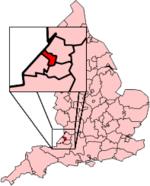Tattoo with identifying details leads to prosecution of thief in Bristol, UK
Tuesday, October 7, 2008

Image: Avon and Somerset Constabulary.
A thief in Bristol, United Kingdom, has been prosecuted due to incriminating evidence in the form of a tattoo on his neck with his name and date of birth that was captured by police CCTV, when he was in the process of stealing a Satellite navigation system in a car planted by police to find criminals.
Aarron Evans, the thief, today pleaded guilty to charges of theft at Bristol Magistrates' Court. He is aged 21 and he is illiterate and has no fixed address.
The sentence was for seven months imprisonment.
Ian Wylie, who is police superintendent for the Bristol district commented on the incident. "Criminals won't be tolerated in Bristol and we will keep catching them and bringing them before the courts," he said. "We get such excellent images from these cameras that there is often, and never more so than in this case, no doubt who the criminal is and what they are doing. When faced with such evidence, there is no other way to go than 'guilty'."
"The photographs don't just lead us to the person breaking into the car either. Further police work has also led us on many occasions to the handlers of the stolen property and people the car criminal is working with. We have also received information from members of the public through Crimestoppers where they have reported stolen property being sold on the streets, door-to-door or in local pubs," Wylie continued. "The covert car has been a magnificent asset to the teams working to reduce car crime happening and those arresting car criminals. "
"We will continue to play our part but members of the public can still help us in reducing the opportunity for thieves; don't leave valuables on display in your vehicle and, better still; take them out of the car completely."
Sources
- Press Release: "Incriminating tattoo leads to imprisonment of car criminal (Bristol)" — Avon and Somerset Constabulary, October 7, 2008
- "Tattoo clue led police to thief" — BBC News Online, October 7, 2008

